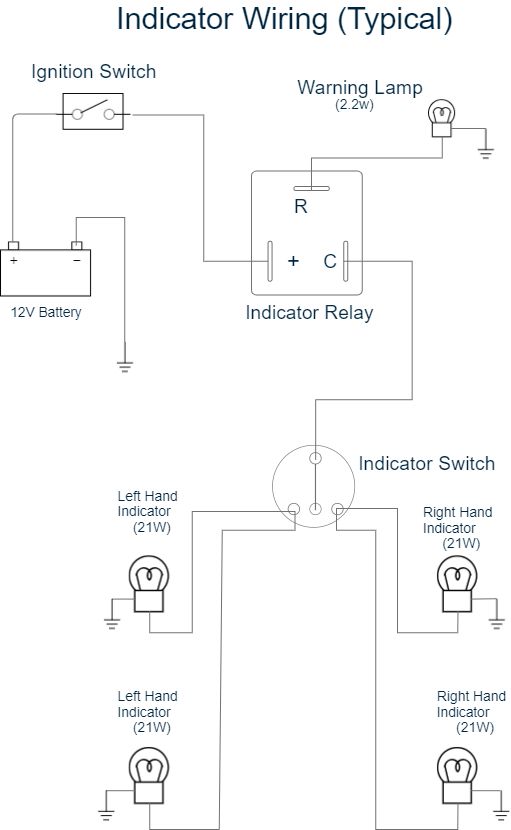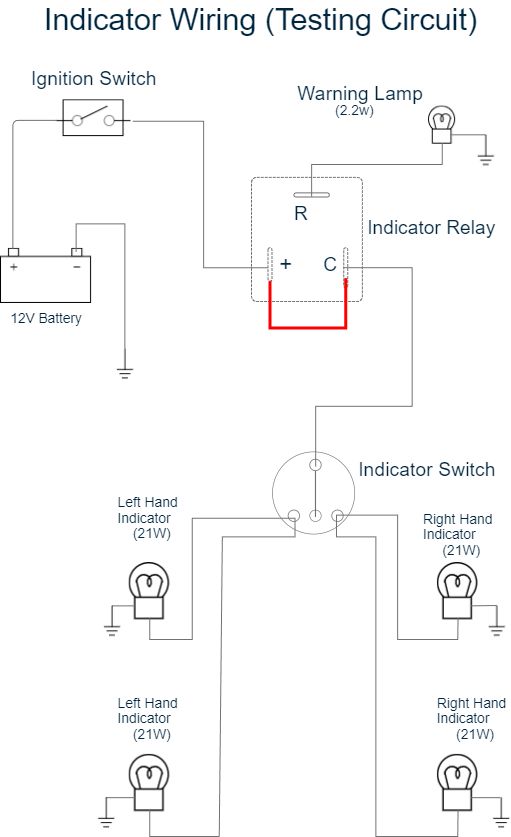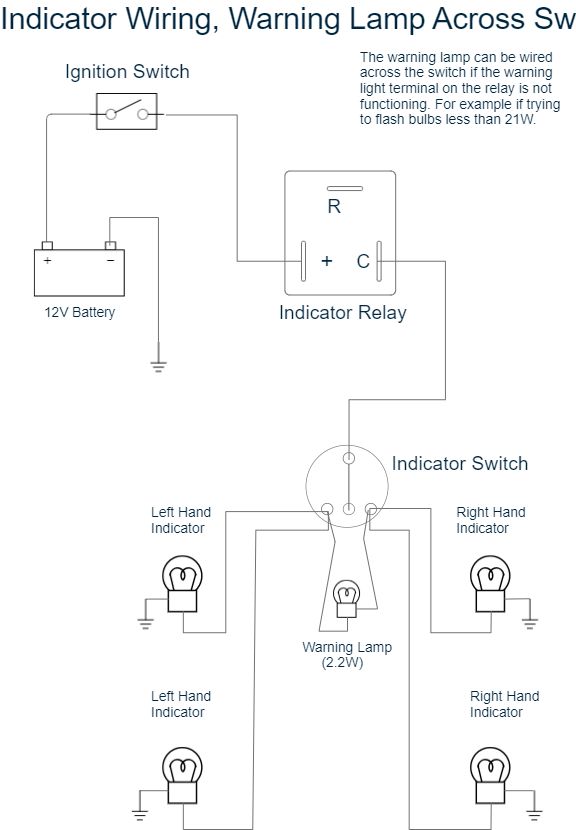AUTO ELECTRICAL WIRING PRODUCTS FOR MODERN, CLASSIC & VINTAGE VEHICLES
Free Delivery ON Orders over £100
(excl. VAT) Mainland UK only, excluding Scottish Highlands.
(excl. VAT) Mainland UK only, excluding Scottish Highlands.
DELIVERY TO THE EU: For private individuals with an order value of less than £120 net, there are no customs or import charges and the order will be delivered directly to your door. (IOSS)
Order our latest catalogue or download a PDF version
Order NowIf you know the part number you want - click here
View If you have issues with your indicators not flashing properly, or the warning light not flashing, then the first thing to do is to check that the connections to the flasher unit are correct. There are many different markings on flashers, but the most common are:
If you have issues with your indicators not flashing properly, or the warning light not flashing, then the first thing to do is to check that the connections to the flasher unit are correct. There are many different markings on flashers, but the most common are:
X , 49, + Power in (6V, 12V or 24V depending on the unit)
L , 49a, C Flashing signal to the indicator switch
CP, R, P Dashboard warning light
31, - Earth Connection
If the connections are correct, please see below for problems and possible solutions:
1. Indicators on the car flash but the warning light on the dash does not: This is normally due to the fact that the indicator bulbs on the vehicle are not 21W. Most flasher units are designed to work when flashing 42W (one side of a vehicle). If, for example, the bulbs being used are 10W, then the flasher unit will only be flashing 20W. In many cases, the flasher unit will 'think' that a bulb has blown, and it will stop flashing the dash lamp as way of warning you that a bulb has gone on the car somewhere. However in this example, it has not. It is just that the indicator bulbs are the incorrect wattage. In this case, check the wattages of the bulbs.
 2. Both left hand and right hand indicators do not work at all. This is probably caused by a wiring fault or by a dead flasher unit. In order to test if the flasher unit is dead, unplug it and connect the wire going to the + terminal to the wire going to the C terminal, effectively bypassing the flasher unit. When this is done, try the indicators again. If, nothing has changed then, there is a wiring fault. If the indicators come on, but do not flash, then the flasher unit is at fault and needs investigation.
2. Both left hand and right hand indicators do not work at all. This is probably caused by a wiring fault or by a dead flasher unit. In order to test if the flasher unit is dead, unplug it and connect the wire going to the + terminal to the wire going to the C terminal, effectively bypassing the flasher unit. When this is done, try the indicators again. If, nothing has changed then, there is a wiring fault. If the indicators come on, but do not flash, then the flasher unit is at fault and needs investigation.
 3. Flashing less than 42W. Some indicator relays (not the bi-metallic strip type), will still flash the indicator bulbs even if the bulbs are not 21W. However, the relay will 'think' that there is a problem and stop flashing the warning lamp as a warning. In order to get over this, the warning lamp can be connected across the indicator switch. This works as the warning lamp earths through the bulbs on the opposite side of the vehicle on the side that is not being flashed. This will not work with LED indicator bulbs, LED warning lamps, or some warning buzzers.
3. Flashing less than 42W. Some indicator relays (not the bi-metallic strip type), will still flash the indicator bulbs even if the bulbs are not 21W. However, the relay will 'think' that there is a problem and stop flashing the warning lamp as a warning. In order to get over this, the warning lamp can be connected across the indicator switch. This works as the warning lamp earths through the bulbs on the opposite side of the vehicle on the side that is not being flashed. This will not work with LED indicator bulbs, LED warning lamps, or some warning buzzers.
4. Checking circuits by removing the flasher unit (to be continued)
5. Electronic flashers and interference